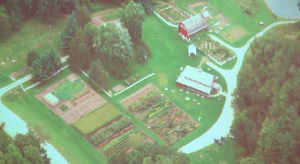Why Garden? Why Save Seeds? Thoughts from Diane Ott Whealy
Diane Ott Whealy, founder of Seed Savers Exchange in Decorah, Iowa, is a passionate advocate for gardening and seed saving, and at a talk at the Minneapolis Spring Home and Garden Show Sunday, her case for the value — even the necessity — of home gardening came through in a few quotes.
The meaning of ‘amateur’ is one who cares.

Diane and Kent Whealy founded Seed Savers Exchange in the mid-1970s. Diane had grown up in Iowa farm country, where her grandfather — the now famous Grandpa Ott — was a self-taught veterinarian, farmer, barber and politician. Her grandmother’s shopping list included: flour, sugar, salt, coffee and vinegar. Everything else they grew in the garden or raised on their land, and Diane grew up on sugared ‘German Pink’ tomatoes and other storied crops. As young homesteaders, the Whealy’s got the idea to preserve these seeds, which seemed to be slowly fading from the market. The enthusiastic response from home gardeners all over the country eventually turned their idea into a business.
Genetic diversity is an abstract concept, but you can understand what genetic diversity means with the variety of colors and shapes of tomatoes.
Pink ones, green ones, striped ones, oblong, round, tiny like a grape or as large as a melon, there are 4,000 varieties of tomatoes, many grown or developed in niche cultures and climates around the globe. While companies like Seed Savers and organizations such as the USDA and Svalbard Global Seed Vault are preserving these varieties, that’s not enough, Diane says. “We need to grow these varieties.” And, gardeners, too, can save seeds.
Heirloom tomatoes are the gateway drug to heirloom vegetables.

How do you get gardeners to grow a wide range of vegetables and fruits? How do you introduce consumers to heirlooms. Start with tomatoes. Once you’ve tasted an heirloom tomato, you hunger for other old-style, grown-for-taste-not-transport vegetables. Peppers, beans, lettuces, squash, melons, the options are endless, and it’s not just vegetables.
While flowers may have been a luxury in my grandmother’s garden, now I think they are a necessity.
Concern about having enough pollinators and providing food for beneficial insects is a motivation for many gardeners. So Diane’s garden has old-fashioned flowers and plenty of herbs to make sure those plants that need insects for pollination have them around. Some gardeners feel their yards are too small or their efforts too little to make a difference in huge issues like preserving plant diversity or protecting pollinators, but Diane does not agree.
The one thing we can still control might be our gardens.
—Mary Lahr Schier
